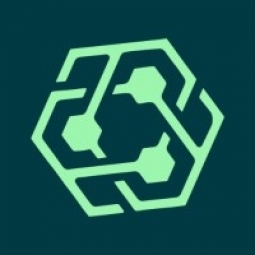Customer Company Size
Large Corporate
Region
- Europe
Country
- Germany
- Canada
- Luxembourg
- Norway
- South Africa
Product
- Hyperledger Fabric
- LA Ledger
- Collateralized Coins (CollCo)
Tech Stack
- Blockchain
- Cloud Computing
Implementation Scale
- Enterprise-wide Deployment
Impact Metrics
- Cost Savings
- Productivity Improvements
- Innovation Output
Technology Category
- Application Infrastructure & Middleware - Blockchain
- Infrastructure as a Service (IaaS) - Cloud Computing
Applicable Industries
- Finance & Insurance
Applicable Functions
- Business Operation
- Procurement
Use Cases
- Supply Chain Visibility
- Fraud Detection
Services
- System Integration
- Software Design & Engineering Services
About The Customer
Deutsche Börse Group (DBG) is one of the largest market infrastructure providers worldwide. It organizes markets characterized by integrity, transparency and safety for investors who invest capital and for companies that raise capital. It operates various markets on which professional traders buy and sell equities – the German cash market Xetra / Börse Frankfurt, derivatives via Eurex, Foreign Exchange via 360T and other financial instruments according to clear rules and under strict supervision. On the post trade layer, DBG operates Eurex Clearing, one of the largest clearing houses globally, as well as Clearstream, a leading international central securities depository (ICSD) and supplier of post-trading services. Amongst others Clearstream manages, safekeeps and administers the securities that it holds on behalf of its customers. Over 300,000 domestic and internationally traded bonds, equities and investment funds are deposited with Clearstream. It holds a volume of over 13 trillion euros in assets under custody. DBG is deeply dedicated to technological innovation. Electronification of trading and clearing has long been a key success factor for DBG, going back to the launch of Deutsche Terminbörse (DTB) in 1990, one of the first global electronic derivatives exchanges. As a global market infrastructure provider with a digitized focus, DBG keeps up with latest technology developments such as blockchain in order to establish “Exchange 4.0”, the exchange of the future, for the benefits of the sector and its customer base.
The Challenge
Deutsche Börse Group (DBG) is a leading global exchange organization with a track record of innovation in information technology in the financial sector. DBG started to engage in the blockchain subject during 2015 and identified more than 20 use cases across its business units. Given the fact that blockchain was – and still is – in its infancy, to quickly gain internal knowledge, DBG selected a few use cases, relevant for its core business, for deeper analysis and subsequent realization of Proof-of-Concepts (PoCs). For the time being, DBG does not expect its core securities and derivatives trading business will shift to blockchain based trading systems, due to their large throughput and ultra-low latency requirements. DBG concentrated instead on use cases in the post trade arena and identified potential for blockchain applications in the area of clearing and settlement of securities & cash. Blockchain can improve the operational efficiency in these areas, i.e., shorter settlement times, reduction of reconciliation efforts, more efficient asset servicing, etc. In the long run, certain clearing and settlement functionality will likely materialize via blockchain being supported by clearing houses and CSDs to manage credit and counterparty risks.
The Solution
DBG selected Hyperledger Fabric 0.6 as its initial platform for building blockchain prototypes, as it meets core requirements like providing modular architecture delivering high degrees of flexibility and scalability. Given the fact that Hyperledger is truly open source, it allowed DBG to familiarize with the underlying concepts, architectures and the realization of the various algorithms, thus to build-up in-house capabilities. Furthermore, its completeness allowed DBG to develop prototypes, including access management and user-interfaces in a relatively short time. DBG developed three use cases centered around its business dealing with securities settlement, asset servicing and collateral management for detailed investigation: Cross border collateral movement, Post trade processing for securities, and Collateralized Coins. For each use case, DBG developed a functional prototype based on Hyperledger Fabric and deployed it for testing and customer demonstration in the cloud. These prototypes contain besides pure commercial bank money payments between the different users also functionality to settle securities in delivery-versus-payment mode, thus being the basis for peer-to-peer securities trading.
Operational Impact

Case Study missing?
Start adding your own!
Register with your work email and create a new case study profile for your business.
Related Case Studies.

Case Study
Real-time In-vehicle Monitoring
The telematic solution provides this vital premium-adjusting information. The solution also helps detect and deter vehicle or trailer theft – as soon as a theft occurs, monitoring personnel can alert the appropriate authorities, providing an exact location.“With more and more insurance companies and major fleet operators interested in monitoring driver behaviour on the grounds of road safety, efficient logistics and costs, the market for this type of device and associated e-business services is growing rapidly within Italy and the rest of Europe,” says Franco.“The insurance companies are especially interested in the pay-per-use and pay-as-you-drive applications while other organisations employ the technology for road user charging.”“One million vehicles in Italy currently carry such devices and forecasts indicate that the European market will increase tenfold by 2014.However, for our technology to work effectively, we needed a highly reliable wireless data network to carry the information between the vehicles and monitoring stations.”

Case Study
Safety First with Folksam
The competitiveness of the car insurance market is driving UBI growth as a means for insurance companies to differentiate their customer propositions as well as improving operational efficiency. An insurance model - usage-based insurance ("UBI") - offers possibilities for insurers to do more efficient market segmentation and accurate risk assessment and pricing. Insurers require an IoT solution for the purpose of data collection and performance analysis

Case Study
Smooth Transition to Energy Savings
The building was equipped with four end-of-life Trane water cooled chillers, located in the basement. Johnson Controls installed four York water cooled centrifugal chillers with unit mounted variable speed drives and a total installed cooling capacity of 6,8 MW. Each chiller has a capacity of 1,6 MW (variable to 1.9MW depending upon condenser water temperatures). Johnson Controls needed to design the equipment in such way that it would fit the dimensional constraints of the existing plant area and plant access route but also the specific performance requirements of the client. Morgan Stanley required the chiller plant to match the building load profile, turn down to match the low load requirement when needed and provide an improvement in the Energy Efficiency Ratio across the entire operating range. Other requirements were a reduction in the chiller noise level to improve the working environment in the plant room and a wide operating envelope coupled with intelligent controls to allow possible variation in both flow rate and temperature. The latter was needed to leverage increased capacity from a reduced number of machines during the different installation phases and allow future enhancement to a variable primary flow system.

Case Study
Automated Pallet Labeling Solution for SPR Packaging
SPR Packaging, an American supplier of packaging solutions, was in search of an automated pallet labeling solution that could meet their immediate and future needs. They aimed to equip their lines with automatic printer applicators, but also required a solution that could interface with their accounting software. The challenge was to find a system that could read a 2D code on pallets at the stretch wrapper, track the pallet, and flag any pallets with unread barcodes for inspection. The pallets could be single or double stacked, and the system needed to be able to differentiate between the two. SPR Packaging sought a system integrator with extensive experience in advanced printing and tracking solutions to provide a complete traceability system.

Case Study
Transforming insurance pricing while improving driver safety
The Internet of Things (IoT) is revolutionizing the car insurance industry on a scale not seen since the introduction of the car itself. For decades, premiums have been calculated using proxy-based risk assessment models and historical data. Today, a growing number of innovative companies such as Quebec-based Industrielle Alliance are moving to usage-based insurance (UBI) models, driven by the advancement of telematics technologies and smart tracking devices.

Case Study
MasterCard Improves Customer Experience Through Self-Service Data Prep
Derek Madison, Leader of Business Financial Support at MasterCard, oversees the validation of transactions and cash between two systems, whether they’re MasterCard owned or not. He was charged with identifying new ways to increase efficiency and improve MasterCard processes. At the outset, the 13-person team had to manually reconcile system interfaces using reports that resided on the company’s mainframe. Their first order of business each day was to print 20-30 individual, multi-page reports. Using a ruler to keep their place within each report, they would then hand-key the relevant data, line by line, into Excel for validation. “We’re talking about a task that took 40-80 hours each week,” recalls Madison, “As a growing company with rapidly expanding product offerings, we had to find a better way to prepare this data for analysis.”



